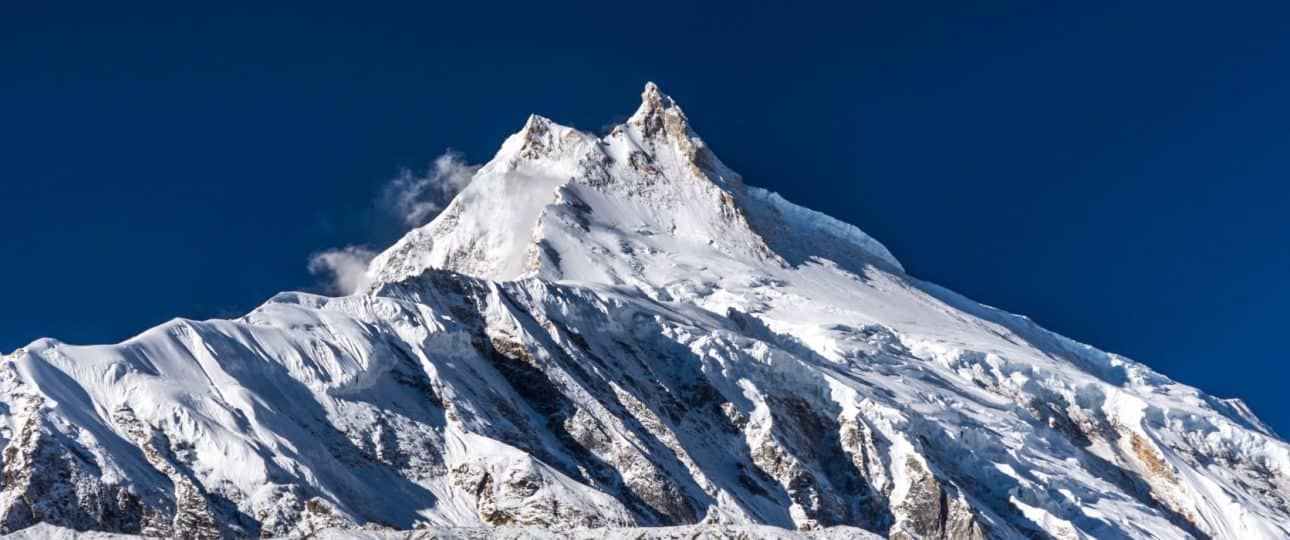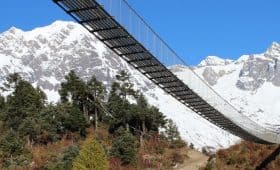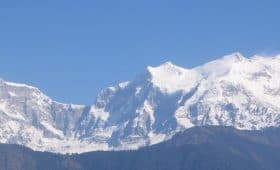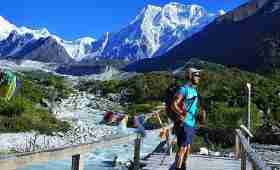Undoubtedly, the Manaslu Circuit Trek is getting more and more popular as a new trekking destination in Nepal.
Because of the uniqueness of this region, yearly many avid trekkers are attracted to this beautiful Manaslu region. The circuit circles around Mt. Manaslu – one of the eighth highest peaks in the world.
The Manaslu Circuit trail passes through landscapes varying from the subtropical to high alpine meadows. Manaslu Circuit Trek leads you to the high land attached to Tibet. Here you’ll mostly get to experience Tibetan-influenced cultures and traditions among with others.
Along the Manaslu Circuit trek, you’ll travel into the Himalayan region to have an amazing experience. You will have an opportunity to see beautiful landscapes with a variety of endemic flora and fauna.
Table of Contents
Manaslu Circuit Trek Distance
The Manaslu Circuit trek begins from Arughat of the Gorkha district. The final point of the trek is Besisahar, the starting point of another most popular Annapurna Circuit trek. The total distance cover during the trek is about 170 kilometers (that’s 105 miles).
The highest point of trek tends to be Larkya La Pass-one of the dramatic pass in the Himalayas of Nepal. To cross this pass it is challenging but you’ll be blessed with some of the best views of Mt. Manaslu and the nearby peaks.
You might get a little difficult for the first few days on the trail. As the trails are narrow and uneasy to walk. But walking from low to highland is really enchanting.
The typical round Manaslu Circuit trip takes around 16 days, the actual distance you’ll be covering each day will be approximately 15-20 km.
During the trek, you don’t have to walk continuously for a long time. Definitely, your walking pace will be slow as you’ve to walk via rocky terrain, uphill, and downhill which ultimately slows you down.
Also, you don’t have to walk with your heavy bags as it’ll be carried by your porters (if you’re trekking in a group). If you would like to know more about the difficulty of the Manaslu Circuit trek, read our guide about Manaslu Trek’s difficulty.
You can add side trip Tsum Valley on standard Manaslu Circuit trek. Manaslu Tsum Valley Trek approximately takes about 21 days.
To get a better idea of the distance and day by day break down of the Manaslu Circuit trek here is a sample itinerary below;
Day 01: Arrival in Kathmandu
Day 02: Sightseeing in Kathmandu
Day 03: Drive from Kathmandu to Machha Khola- (9-10 hours)
Day 04: Trek from Machha Khola to Jagat- 22.2 km (5-6 hours)
Day 05: Trek from Jagat to Deng- 19.9 km (6-7 hours)
Day 06: Trek from Deng to Namrung
Day 07: Trek from Namrung to Lohegaon- 10.5 km (8-9 hours)
Day 08: Trek from Lohegaon to Samagaon- 8 km (8-9 hours)
Day 09: Acclimatization Day at Samagaon
Day 10: Trek from Samagaon to Samdo- 7.8 km (3-4 hours)
Day 11: Hike to Larka la Phedi- 6.5 km (4-5 hours)
Day 12: Trek to Bumthang via the Larkya La Pass and Glacier- 24.7 km (9-10 hours)
Day 13: Trek from Bumthang to Tilche- 26.3 km (6-8 hours)
Day 14: Trek to Dharapani and drive to Besisahar
Day 15: Drive back to Kathmandu
Day 16: Goodbye and farewell from Nepal !!!
All these facts and figures are rough approximations. Hopefully, this information has convinced you set on your own trek to Manaslu Circuit trek.
If you want more information regarding Manaslu CIrcuit trek distance or any other information please free to contact us.
Want more information? Send us your query, and our experts will get back to you within 24 hrs.
FAQs
How fit do I need to be to trek the Manaslu Circuit trail?
Trekking in the Manaslu region is a joyous and wonderful experience. For the Manaslu Circuit trek, you need to be reasonably fit. You should be able to walk for 6-8 hours on uneven terrain.
If you manage walking for long hours, up and downhill with carrying a light pack, then you’ll be OK !!!
But if you’re not well prepared for the trek then it may become more tiring and hectic.
Aerobic exercises including running, cycling, swimming, running, and speed walking are good to start for preparing treks.
It is absolutely more attainable than you think, but don’t disregard your fitness altogether for an enjoyable journey.
What is the cause of altitude sickness?
While trekking at high altitude, the biggest concern is acclimatizing to the changing altitude. The main reason for altitude sickness is ascending to a height too rapidly. Climbing too high and staying there for too long may also cause it.
Once you reach altitudes of over 8,000 feet, the oxygen levels in the air significantly decline. So, it can be difficult for your body to adjust to the decreased oxygen.
So, it is important to listen to your body when traveling to higher altitudes. If your body experienced altitude sickness, then don’t go any higher until your symptoms improve. It is better to move toward low-land if your symptoms get worse.
What should I do to avoid altitude sickness?
Altitude sickness is an uncomfortable and serious condition that affects some people while traveling to high-altitude destinations.
But altitude sickness is preventable. Everyone body needs time to adjust to the high altitude. So everyone at some risk when ascending to higher altitudes.
Fortunately, there are a few steps to avoid altitude sickness. The best way to avoid altitude sickness is to allow your body to adjust to the decreased level of oxygen in high altitude locations.
1. Ascend slowly
Since your body can take several days to adjust to decreased oxygen. It is good to avoid ascending more than 1,000 feet a day. If you are traveling to very high altitudes, stop at 8,000 to 9,000 feet for a few days before moving on.
2. Sleep low
While sleeping at a high altitude, your blood oxygen level is low. So, it’s good to visit high altitudes during the day and return to lower altitudes to lower altitudes for sleeping.
3. Avoid alcohol and beverage
You should not consume alcoholic beverages at high altitudes.
Take medications
After doctor consultation, you can take Diamox anti-altitude sickness pills to help your body adjust to rapidly increasing altitudes.
Want more information? Send us your query, and our experts will get back to you within 24 hrs.

Madhav started working as a porter in 2001 and then moved on to work as a trekking guide. After working in the trekking and tourism industry for eight years, he co-founded Mosaic Adventure in 2009.
Madhav has trekked to most of the trekking destinations in Nepal, including Everest Base Camp Trek, Annapurna Base Camp, Annapurna Circuit Trek, Poon Hill Trek, Jomsom Muktinath Trek, Indigenous Peoples Trek, Langtang Valley Trek, Mardi Himal Trek, and all of the day hikes around Kathmandu.
He has also extensively traveled to other countries such as Australia, the USA, the UK, France, Hong Kong, Japan, China, the Philippines, the UAE, Saudi Arabia, Bahrain, Thailand, Turkey, and India. Madhav is the one who answers most of your questions about trekking and tours and helps to plan your trip by giving a personal touch.




